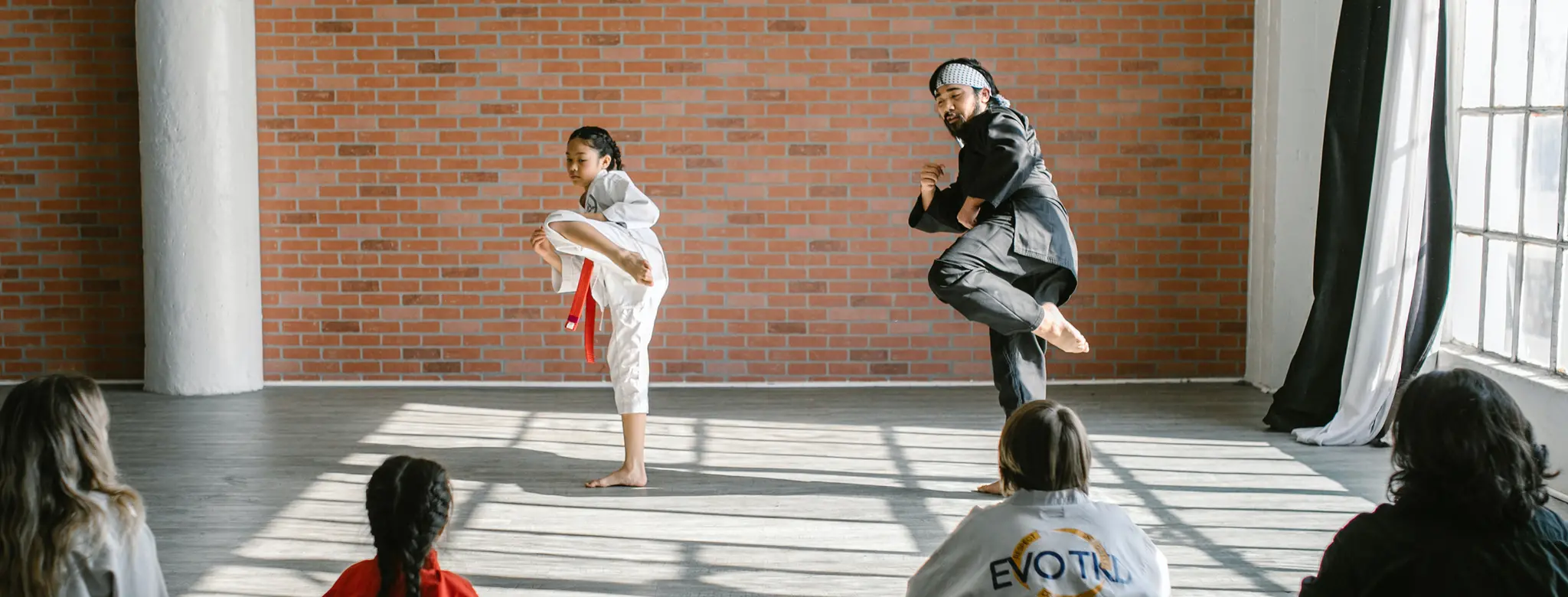
5 Dojo Design Ideas to Enhance Your Members' Experience
September 6, 2023
You've finally found it—a place to bring your dojo to life. If sharing your passion for martial arts has been a life-long dream, you may already have a vision of what your new studio should look like. Now, you'll need to find a way to join form and function and create a space to share your knowledge of taekwondo, karate, or jiu-jitsu.
Even if you're not moving into a custom-designed building (maybe you’re retrofitting an existing space), there are opportunities to incorporate your dojo design ideas. Check your lease and expense budget and make a list of items you want to alter—paint colors or flooring, perhaps. Consider how any changes affect the flow and overall energy of your space. Consider the following features as you make your vision a reality.
1. A welcoming reception area
The reception area in your dojo is the first thing your clients see when they enter your studio. Think about how to showcase your personal martial arts philosophy to create a lasting impression on visitors. What type of ambiance do you want to create? Do you prefer vibrant colors or more serene hues? Could you brighten the walls with a mural featuring your logo or other martial arts-themed artwork? What about softer textiles or sharper metallics? If you have minimalist tendencies, you might keep the area clean and clutter-free. Let your welcoming space reflect your personal brand.
As clients step up to the welcome desk, you'll want to roll out an organized presentation. Set up a display to feature your marketing materials and class schedules with clear signage. For times when you're not available to welcome visitors in person, leave a notebook at the front desk to collect contact numbers and member information. Messenger[ai], which handles missed calls and books appointments and classes, helps with administrative tasks. This allows your staff to focus on the clients they're with rather than scrambling to cover all the bases.
2. Comfort and purpose
Now that you've sorted out how to welcome clients into your space, the next step is to design a comfortable yet functional training area. It may be helpful to set a focal point and center your design around it. Will your sparring or training area be the center of attention at your facility? If so, you can define this space with mats or a cage.
Safe and durable flooring is an essential piece of your dojo design. What's beneath your feet should be able to handle the wear and tear of daily activity. Consider larger, heavier mats that are less portable but cover more surface area or opt for smaller, lighter mats that enable you to customize the training area for different activities. Depending on the type of instruction you're providing, you could use movable mats of different sizes and thicknesses, rubber flooring, or interlocking tiles. Roll-up or fold-up mats can also easily be moved between classes and placed in storage.
You’ll need lot of elements beyond the training area. If you're opening a larger dojo and want to showcase your staff or members' talent, consider setting up a space to stage performances. Parents or other class observers will need a spot to gather where they can observe without spilling over onto the training floor. Your layout may also need to include cubicles for students to store personal belongings and changing facilities, as well as administrative and office space and bathrooms.
3. Smart storage
Storage space is another important element of your dojo design. It's likely you won't be using all your equipment for every class, so you'll need to safely secure extra mats, shields, targets, and protective gear. Make sure the equipment is easily accessible but not sitting out in the open where it could be used without the proper supervision. Check out locked closets or storage bins, shelving, or racks that can hold items when they're not in use.
It's up to you to decide how much equipment you'll need. Review your business plan and your budget before you're tempted to overspend on items you may not use regularly.
4. User experience
Certain design elements that don't cost a fortune can enhance your studio and create a more satisfying user experience. A newer sound system with a built-in intercom or streaming music capabilities help you deliver clear, uninterrupted instruction, ensuring that your students don't encounter glitches. For large classes, try mounting video monitors on the walls to improve visibility and keep everyone focused as they work through different stances, footwork patterns, and blocking movements.
If an environmentally friendly design is a priority, add sustainable elements such as LED lighting to reduce energy costs or floor mats made from recycled materials. Think about incorporating a filtered water station to encourage the use of reusable containers.
5. Attention to detail
Your finished dojo design ideas will incorporate aspects of your personal style as well as elements of your martial arts philosophy. But don't forget about the finishing touches! Small additions, like dojo decor pieces or motivational posters reaffirming positive behaviors, accentuate the space and encourage students to focus and learn.
When you complete your design, take a tour of your dojo as though you were a potential member and observe how it reflects your vision and style. If the space represents your passion for martial arts, then your next step is to celebrate your grand opening!
